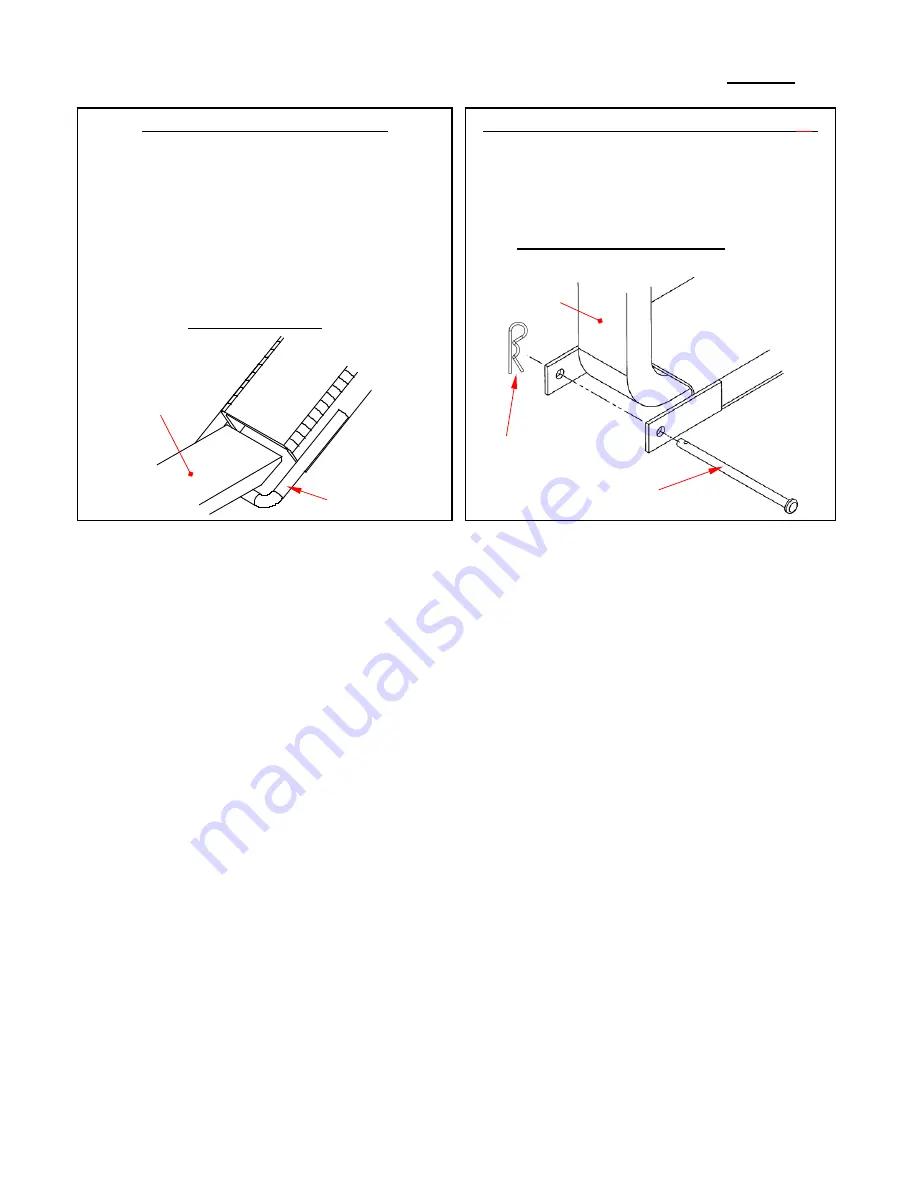
Rev. 4/17/2019
FE MANUAL
Copyright 2019 Vestil Manufacturing Corp. 4 of 6
Installation:
You should obtain a copy of the most recent edition of ANSI/ITSDF B56.1
BEFORE
installing, using, or maintaining your fork extensions.
Confirm Proper Fit:
Using fork extensions that are too long or too wide, or both, is dangerous. After receiving your
extensions you should confirm that they properly fit your forklift. If you have any questions about the fit of
. DO NOT use the extensions unless they properly fit the
forks of your forklift.
1. Compare the length of the forks (also called tines) to the length of the fork extensions. The extensions
must not be more than 150% of the length of the forks.
2. Review labeling applied to the underside of your extensions. The warning label provides important
information about the minimum and maximum dimensions of forks that could be used with the
extension.
3. To prevent the extensions from moving side-to-side during use, select a model that matches the fork
width. According to ANSI/ITSDF B56.1-2005, paragraph 7.39.5, p. 51, for a fork extension to fit a fork
properly, “Lateral clearance shall not exceed 12mm between fork and extension.”
Record of Normal Condition:
Before putting the extensions into service, make a written record that thoroughly describes the
condition of each one. Describe welds, hardware (if applicable), and paint/powder coat. Determine the
levelness of each extension, e.g. with a bubble level. Photograph the unit from several vantage points.
Add the photographs to the record. Include photographs of all labels applied to the unit. Indicate where
the labels are applied. This record establishes normal condition. Compare your observations during all
inspections to this record to determine if the unit is in normal condition or requires repair. Purely cosmetic
changes, e.g. damaged paint/powdercoat, are not changes from normal condition. However, touchup
paint should be applied wherever the finish is damaged as soon as the damage occurs.
Inspections:
Compare the results of all inspections to the
Record of Normal Condition
.
A. Before each use:
Look for damage to either the fork extension or the tine lock/loop. Verify that the locking
mechanism functions normally.
Examine the tip of the extension. Make sure that it is not cracked or deformed, and that the
weld between the tapered end and the fork pocket portion is intact.
Removable Pin Tine Lock (Models FE-x-xx
-P
)
Remove the R-pin and pull out the lock pin.
Place the fork extension over the tine/fork.
Install the locking behind the heel of the tine;
then reinstall the R-pin.
Standard Welded-Loop Tine Lock
Raise the forks (tines) approximately 4-6in. from
the ground. Manually lift the tip of the fork
extension so that the extension is angled at 45°
to the ground/floor. Guide the tine loop
underneath the tapered end of the tine; slide the
fork extension onto the tine until it reaches the
heel of the tine; then lower the extension onto
the fork once the tine lock is behind the heel of
the tine.
Standard tine loop
Tine lock with removable pin
Tine loop
Fork / Tine
Fork
extension
Lock pin
(14-612-001)
R-pin
(45286)
Fork / tine
Fork
extension






